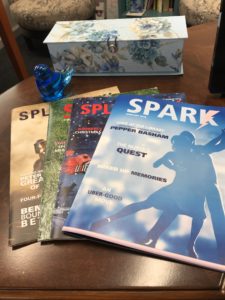Welcome to the Wednesday Writer. Let’s talk flash! Definitions of flash fiction vary, but basically, this is a short story of less than 1000 words. Sometimes as short as 100 words. It is a complete story with a beginning, middle, and end. Flash follows the same simple story structure as a lengthy novel:
Hero + goal + obstacles to overcome= Good story. Most stories also have a sidekick or two, because we all need a little help from our friends to get through this bumpy life to the other side.
The only difference with flash fiction is everything is condensed. Flash relies upon Strunk & White’s advice to, “omit needless words”. Imagine that you’ve just walked into your scene (say the back seat of an Uber driver). Listen to a snippet of conversation and see if you can learn in a few sentences what the driver wants from life (maybe a long-term relationship), what is stopping her, (maybe her own busy lifestyle). And, how she is going to overcome that obstacle. (I’m not finishing this one. You can either read my version in Splickety’s Spark magazine, or you can write your own.)
Writing flash fiction is a great exercise for any writer. Like Twitter, it forces us to bring our writing down to the bare essentials. And, that is usually best. Sometimes, when I’m stuck on a scene in a novel, I flip over and write some flash fiction to rev up the engines.
If you want to learn more, check out one of the magazines at Splickety Publishing.
Or, if fiction isn’t your vibe, try writing a 100-word true story for Reader’s Digest.
The point today, my writing friend, is to have fun!

